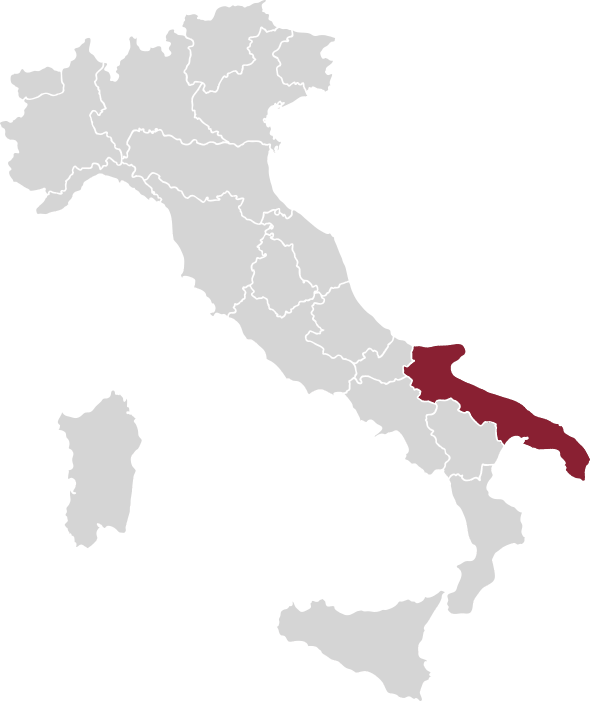- GRAPES: Negroamaro, Malvasia
- APPELLATION PUGLIA IGT
- PRODUCTION AREA: Apulia
- CLIMATE: The climate is warm and temperate, with abundant rainfall throughout the year. In summer, the African winds cause a rapid and marked rise in temperatures with significant temperature fluctuations.
- HARVEST: First week of September
- STORAGE TIME: 7-8 years
- BOTTLE SIZE: 750 ml
- SERVING. TEMP.: 18-20 °C
- ALCOHOL CONTENT: 14% Vol
 Deep red with garnet hues on the rim
Deep red with garnet hues on the rim
 The nose reveals aromas of red fruit and jam that blend with sweet and spicy notes
The nose reveals aromas of red fruit and jam that blend with sweet and spicy notes
 Great structure and concentration are perfectly integrated with soft and round tannins. The finish is pleasantly long and velvety
Great structure and concentration are perfectly integrated with soft and round tannins. The finish is pleasantly long and velvety
 Pairs perfectly with first courses, red and grilled meats
Pairs perfectly with first courses, red and grilled meats

The vinification method involves the use of Palmenti during the Fermentation phase. These ancestral fermentation vessels were used in Puglia since the early days of winemaking, as testified by various archaeological finds in the Salento area. The artifacts were made of stone and, thanks to their characteristic shape (low, wide and completely open), allowed optimum contact with the grape skins; in comparison with more traditional vessels, the larger must contact surface led to increased concentration of dissolved oxygen during this crucial phase of winemaking.
To produce this wine, we vinified the grapes in modern Palmenti, built according to the shape and the features of the original models. The complete extraction of the skin compound and the greater concentration of dissolved oxygen in the wine make the tannins softer and longer lasting. The wine thus obtained is aged for 3 to 6 months; the malolactic fermentation is fully completed.




